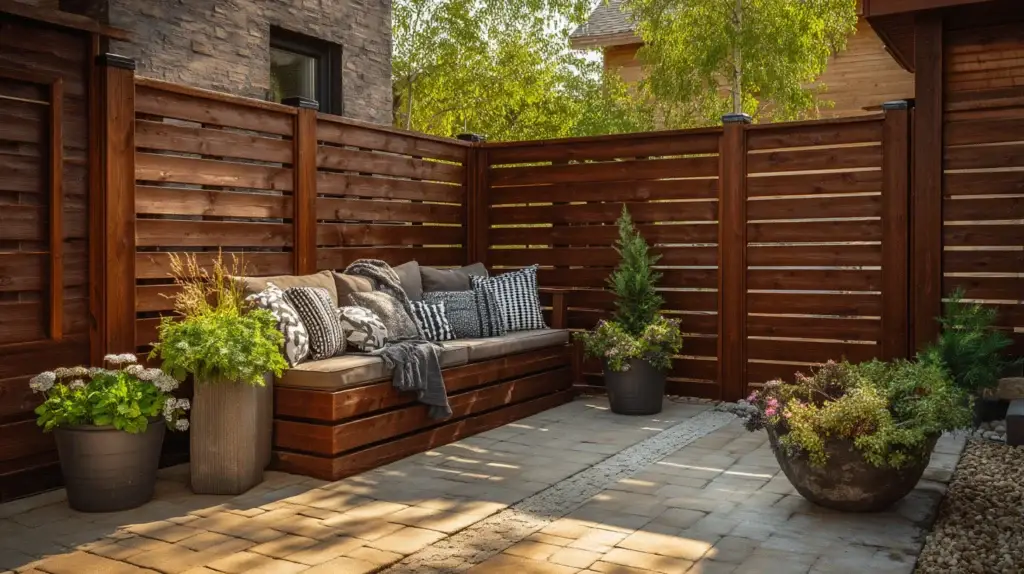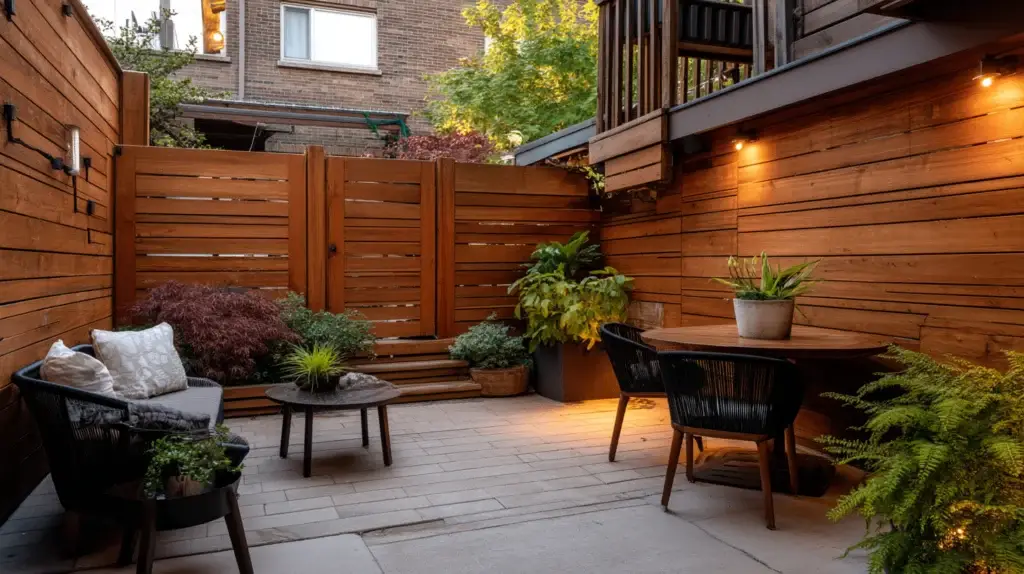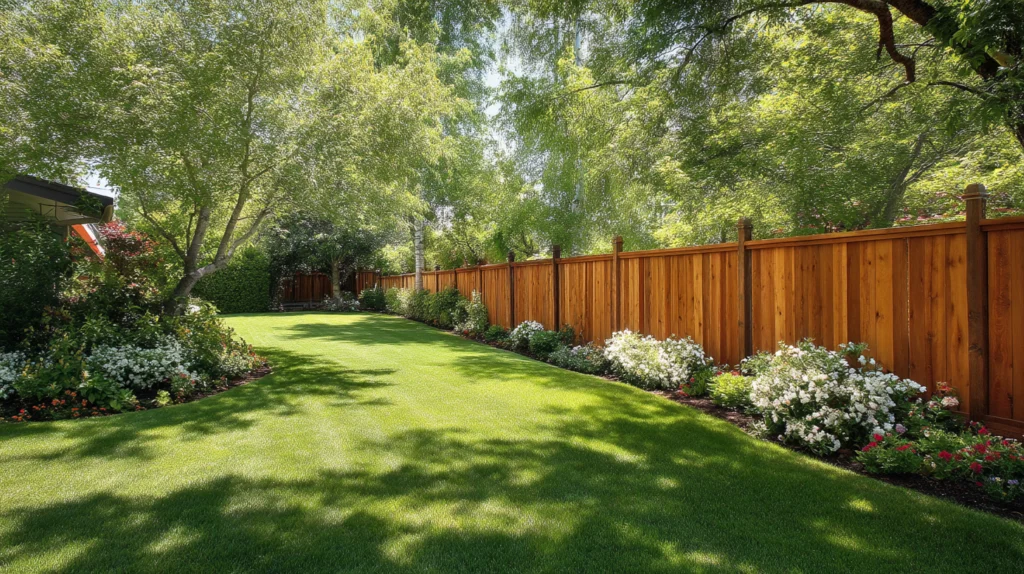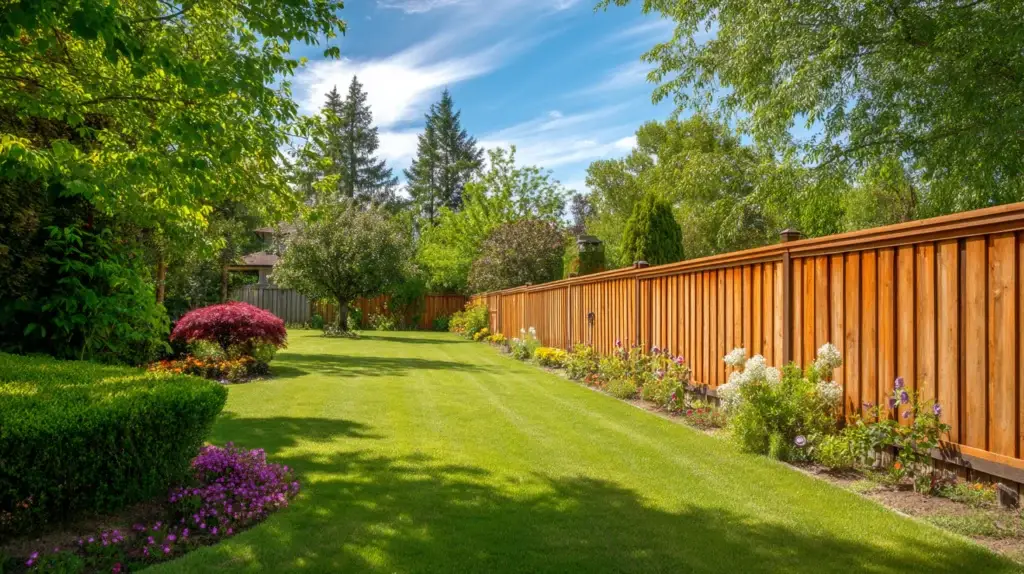A classic wood fence adds warmth, privacy, and lasting curb appeal to any home. It’s one of the most popular fencing choices across Northern California, offering natural beauty and flexible design options for front yards and backyards alike. Before planning your new fence, it’s smart to understand how much a wood fence costs today. In 2025, wood fence costs vary based on materials, labor costs, fence length, and style. This guide breaks down every key factor so you can budget accurately, compare installation options, and get a fair price for your project.
Average Wood Fence Cost in 2025
The national average cost of a wood fence in 2025 ranges between $25 and $50 per linear foot, depending on height, materials, and local labor rates. Most homeowners spend around $3,000 to $4,800 for a standard 6-foot privacy fence. Smaller picket fences or split rail fences can fall closer to $2,000, while larger properties or premium woods may reach $7,000 or more.
A typical fence project includes fence posts, rails, pickets, concrete, hardware, and professional installation. At Fantastic Fence, we provide clear written estimates that break out material and labor costs, so there are no surprises at the end. The total cost always depends on several factors, but a well-built wood fence remains an affordable, long-lasting investment that improves security and property value.
Wood Fence Cost by Material Type

The type of wood you select will significantly impact your overall cost. Different species vary in price, durability, and appearance.
Pressure Treated Pine Fence
A pressure treated pine fence is the most budget-friendly option available. Treated pine can resist rot, termites, and moisture damage, making it a solid choice for homeowners on a budget. Expect to pay $25–$35 per linear foot installed, depending on fence style and height. With proper maintenance and sealing, a pine fence can last 15 to 20 years. Many contractors recommend staining or sealing soon after installation to preserve color and durability.
Cedar Wood Fence
Cedar remains one of the most popular materials for wood fences because it naturally resists rot and decay. It offers a rich, attractive tone that weathers beautifully over time. The cost per linear foot for cedar is usually $33–$53 installed, which makes it a mid-range but high-value option. Cedar is an excellent choice for homeowners who want a low-maintenance and long-lasting fence with timeless charm.
Redwood and Other Premium Woods
Redwood is the premium choice for luxury properties and decorative projects. It’s naturally resistant to insects and moisture and adds an elegant touch to any yard. A redwood wood fence cost typically falls between $40 and $60 per linear foot installed. While redwood has a higher material cost, it requires less regular maintenance compared to pine and stays beautiful for decades when cared for properly.
Wood Fence Cost by Height and Style
The height and fence style you choose will also affect your installation cost. A taller fence needs more materials and more labor, and decorative elements add to the final price.
- 4-foot picket fences: $20–$35 per linear foot
- 6-foot privacy fences: $30–$50 per linear foot
- 8-foot wood privacy fences: $45–$60 per linear foot
Horizontal designs, board-on-board builds, or lattice tops are decorative elements that create a custom look but may add extra cost. For front yards, shorter picket fences work beautifully to maintain visibility while enhancing curb appeal. In backyards, privacy fences provide excellent security and noise reduction.
Key Factors That Affect the Final Price

No two wood fences are identical. Several factors can significantly impact the total cost of a fence installation.
Fence Length and Layout
Fence length directly influences the cost per linear foot because it determines how much lumber and how many fence posts are required. Large properties use more materials and need more labor to complete. Straight runs are faster to build than irregular layouts that require specialized equipment or precise cuts.
Terrain and Property Conditions
Uneven ground, rocky soil, or existing structures along the fence line can affect the installation process. These site conditions often require more labor and may involve an extra cost for grading, leveling, or custom post setting. Fantastic Fence evaluates every yard carefully to recommend the most efficient approach and minimize additional costs.
Gates and Entryways
Adding gates to your wood fence provides convenient access but increases both material and labor costs. A single walk gate might add $300–$500 to the total cost, while large double gates or automatic gates can cost $1,000 or more depending on hardware and design.
Fence Removal and Preparation
If you have an existing fence, you’ll need to consider fence removal as part of the project. Removing old posts, concrete, and debris typically adds a few hundred dollars to the overall cost, depending on the size of the fence. Including removal in your estimate ensures an accurate budget.
Staining, Sealing, and Maintenance
Finishing your new fence with a high-quality stain or sealant protects it from moisture, sun, and insects. The installation cost for staining or sealing averages $1–$3 per square foot. Proper maintenance helps wood fences last longer and maintain their natural beauty. Regular maintenance every few years keeps your investment strong and attractive for decades.
Market Conditions and Material Costs in 2025
Material cost is a major part of any wood fence project. In 2025, lumber prices have risen slightly due to supply challenges and trade duties. The good news is that Fantastic Fence partners with trusted suppliers across California to ensure consistent availability and fair pricing. Material and labor costs vary based on location, but our professional installation process guarantees long-term value and durability for your investment.
Comparing Wood Fences to Other Materials

When planning a fence project, many homeowners consider other materials. Here’s how wood compares to several popular options.
Wood vs. Vinyl Fencing
Vinyl fencing is durable and nearly maintenance-free but has a higher upfront cost. Wood fencing costs less to install and can be customized to fit any design, making it ideal for homeowners who value natural appearance and flexibility.
Wood vs. Aluminum or Wrought Iron
Aluminum and wrought iron fences provide excellent durability and security but do not offer privacy. Wood fences can be built as privacy fences or decorative picket fences, giving homeowners more control over visibility and design.
Wood vs. Chain Link or Composite
Chain link fencing is functional and affordable, but it lacks the warmth and curb appeal of wooden fencing. Composite fencing is long-lasting and low-maintenance but has a much higher material cost. For most homeowners, a wood fence strikes the perfect balance between cost, appearance, and long-term value.
How to Budget Accurately for Your Wood Fence
To plan your fence project efficiently, start by measuring your property to estimate total linear feet. Next, choose your preferred fence height and fence style, then calculate your material and labor costs. Don’t forget to include staining, sealing, gates, and fence removal if necessary. Fantastic Fence provides free, no-obligation estimates that help homeowners find the best solution for their needs and budget.
How to Save Money on a Wood Fence
There are smart ways to save money on your new fence without compromising quality:
- Choose a simple pressure treated pine fence instead of premium wood species
- Keep the layout straightforward to reduce cuts and labor
- Handle light prep work, like clearing brush or marking utilities
- Combine DIY staining with professional installation for long-term savings
Even small adjustments can lower your overall cost while maintaining strength and beauty. Our team helps homeowners find efficient ways to balance budget and performance.
Maintenance and Longevity of Wood Fences
Proper maintenance is key to keeping your fence strong and attractive. Stain or seal your fence every 2–3 years to protect it from rain, sun, and insects. Check for damaged boards or rot boards periodically and replace them promptly. Replacing individual rot boards is much cheaper than full fence replacement. With regular maintenance, a quality cedar or redwood fence can last 20–30 years. Fantastic Fence also offers professional maintenance services that handle all upkeep for you, saving time and hassle.
The Installation Process and Professional Expertise

The installation process for a wood fence includes layout, post setting, framing, and picket installation. Many contractors use specialized equipment to ensure precise alignment and deep post foundations. While DIY fencing might look appealing, it requires tools, experience, and time. Hiring professionals ensures the job is completed safely, efficiently, and to code. Fantastic Fence manages every step, from necessary permits to clean-up, ensuring a stress-free experience and a durable result.
Additional Features That Enhance Value
You can add personality and function to your fence with optional upgrades. Decorative elements like lattice tops, rot board trims, or custom post caps give your fence a polished look. Homeowners also love incorporating additional materials like metal accents or contrasting stains for unique style. Each upgrade affects the final price but adds lasting curb appeal and character.
Why Homeowners Choose Wood Fences
Wood fences remain a favorite choice across California because they offer unmatched versatility, warmth, and charm. Whether you need privacy fences for a quiet backyard, picket fences for your front yard, or split rail fences for large properties, wood delivers timeless appeal. Fantastic Fence builds every fence with precision, using top-quality lumber and expert craftsmanship.
Frequently Asked Questions
How much does a wood fence cost per linear foot?
Most homeowners spend $25–$50 per linear foot for professional installation. Prices vary based on wood type, height, and location.
What’s the cheapest option for wood fences?
A pressure treated pine fence is the most affordable choice and can resist rot with regular sealing.
How long do wood fences last?
With proper maintenance, wood fences last between 15 and 25 years, depending on material and climate.
How often should I stain or seal my fence?
Staining or sealing every 2–3 years helps protect your fence from moisture and UV damage.
Can you install a wood fence around existing structures?
Yes, we design fences around trees, patios, or existing structures. Adjustments may slightly increase labor costs but ensure a custom fit.
Do wood fences require permits?
Some local areas require permits for fence installation. Fantastic Fence handles all necessary permits for your project.
How soon can installation begin?
Once you approve your estimate, most installations can start within 1–3 weeks, depending on the season and material availability.
Build Your Perfect Wood Fence
A wood fence remains one of the best ways to enhance privacy, security, and curb appeal. Costs vary based on several factors, but a properly installed and well-maintained fence can add beauty and value for decades. Fantastic Fence specializes in professional installation throughout Northern California, offering quality materials, experienced crews, and honest pricing. If you’re ready to explore options for your new fence, contact Fantastic Fence today for a free estimate and see why homeowners across the region trust our team for reliable, long-lasting fencing solutions.

